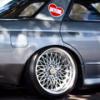Which Piston And Rod Is Supreme?
Announcements
-
Similar Content
-
Latest Posts
-
And 90% of the time those people turn out to be wrong anyway. But they still treat themselves as a victim...
-
I used the radium thing, makes the whole parallel assembly a lot more compact compared to any other way of doing it
-
By TurboTapin · Posted
Racetronix also sells those ethanol content sensor bypass blocks. Adapter, Flex-Fuel E85 Sensor High-Flow Bypass, In-line No Sensor (ADF-FLEX-NS): Adapters - Flex Fuel | Racetronix Ethanol content sensor are originally designed to be on the feed line. These bypass blocks are meant to be ran in the feed line and not return. The continental ethanol content sensors have a 3/8" ID and not 5/16". This is why they are ran on the return line directly in conjunction with a low threshold sampling value VS in the feed with one of these blocks. Haha we think alike, I used both original feed/return for 8AN feed, and one of the Hicas lines as a 6AN return. I also capped off and left the other Hicas line as a spare. -
Interesting, I haven't read about the issue with oil getting into the speedo in the cluster before. I'll have to take more notice with mine. The speedo on my R32's when I've run factory diff and tyre size have never been accurate as far as I can remember. The non Type-M GTS-t did come with 15" 5 stud wheels and smaller brakes, but that's less than 5% of them.
-
Good to hear the condenser you picked up off my brother worked all good. Do you think there could be an issue with your AC compressor itself or the clutch on it then? I don't know a lot about them so I can't really help but keen to hear what it ends up being. Keep the build thread going man, it's nice to look back on over time.
-







Recommended Posts
Create an account or sign in to comment
You need to be a member in order to leave a comment
Create an account
Sign up for a new account in our community. It's easy!
Register a new accountSign in
Already have an account? Sign in here.
Sign In Now